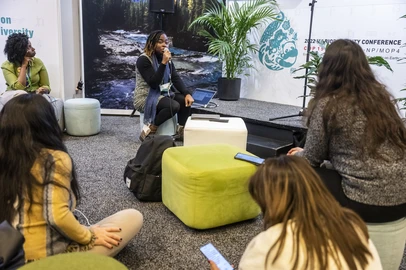Biodiversity and Gender: how their bonds were strengthened in the UN Convention on Biodiversity
April 05, 2023.
Montreal, Canada’s second-most populous city, welcomed parties and stakeholders from all over the world on December 7-19, 2022 for a series of international and UN-related meetings on Biodiversity: The 15th meeting of the Conference of the Parties to the Convention on Biological Diversity (Part II, COP 15); the 10th meeting of the Conference of the Parties serving as the meeting of the Parties to the Cartagena Protocol on Biosafety (COP-MOP 10, Cartagena Protocol); and the Fourth meeting of the Conference of the Parties serving as the meeting of the Partiesto the Nagoya Protocol on Access and Benefit-sharing (COP-MOP 4, Nagoya Protocol). This article focuses on the post-2020 Global Biodiversity Framework (Post-2020 GBF) and its gender-responsive implementation targets.
A piece of history
The UN Convention on Biological Diversity (CBD), which has been in force since 1993, became the first multilateral environmental agreement to have a Gender Plan of Actions (adopted as Decision XII/7 at COP 12, in 2008, at its 12th Conference of Parties in Pyeongchang, Republic of Korea). With this, the CBD recognizes the importance of gender considerations in achieving its 2011 – 2020 strategic biodiversity plan. During the external review process of the first draft of the post-2020 GBF, the UN-CBD Women Caucus pushed for a stand-alone gender target to advance gender mainstreaming and women empowerment, ensure alignment with the CBD Gender Plan of Actions and build complementarity with the UN Sustainable Development Goals (SDGs), particularly SDG 5 (gender equality). Thus, UNCBD women caucus succeeded in birthing a gender-responsive implementation target.
Target 23: ‘Gender-responsive’ or ‘gender-sensitive’, what does it matter?
With some modifications, the stand-alone gender implementation target was included in the non-paper draft version (WG2020-5-CG-4), at the start of the Part II of COP 15 negotiations in Montreal in December 2022. However, this target was met with a rebuttal at the December 6th plenary session, following objections by a party to the inclusion of the word ‘responsive’ in the text of the target.
In her opening statement at COP15 in Montreal on December 7, 2022 the UN CBD women spokesperson reminded parties of the adoption of ‘gender-responsive’ as one of the thirteen principles guiding the preparatory process for the post-2020 Global Biodiversity Framework at the UN CBD COP14 in Sharm-El-Sheikh, November 2018. As a result, replacing the term ‘gender-responsive’ was nonnegotiable in order to ensure a comprehensive and participatory, that is, whole-of-society implementation process. Gender-responsiveness is now integrated in goal D, target 23 and captured in the newly adopted gender plan of action.
Need for capacity building
After this historic victory at COP 15 in Montreal, the work is far from done. Adoption of these gender-related targets (targets 22 and 23) establishes gender-responsive Global Biodiversity Framework implementation as a shared interest and creates a global cohesive picture of desired outcomes. These goals, however, should not be denied the human and institutional resources needed to coordinate collective actions and move them forward.
Although indicators have been established as measures of target achievement, capacity development on ‘Gender and biodiversity’ is the pivot of an effective genderresponsive Global Biodiversity Framework implementation. Finally, how this bond between gender and biodiversity will play out in the national contexts, relies majorly on credible commitments and actions.
Read the full blog post (including references) here.
Author: Isimemen Osemwegie is a senior researcher at ZEF.
Contact: osemwegie(at)uni-bonn.de
This article was published in ZEF News No. 46.



